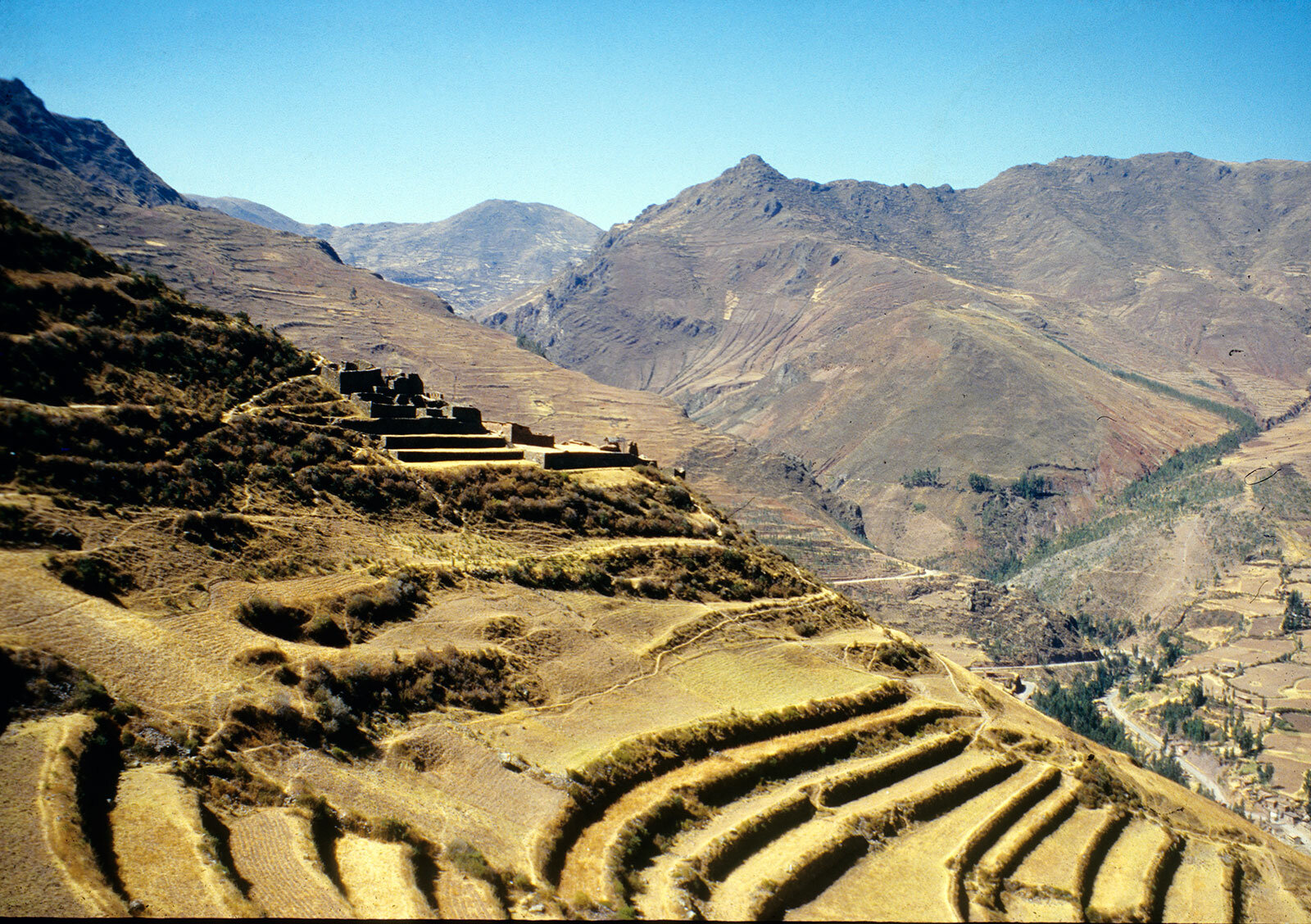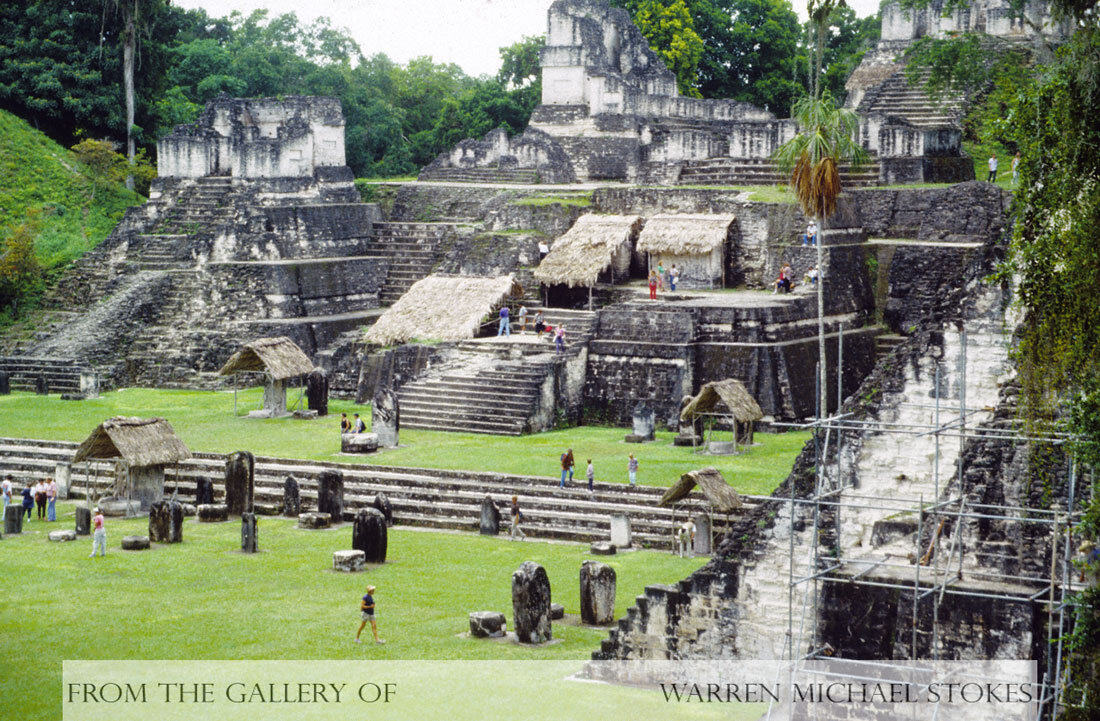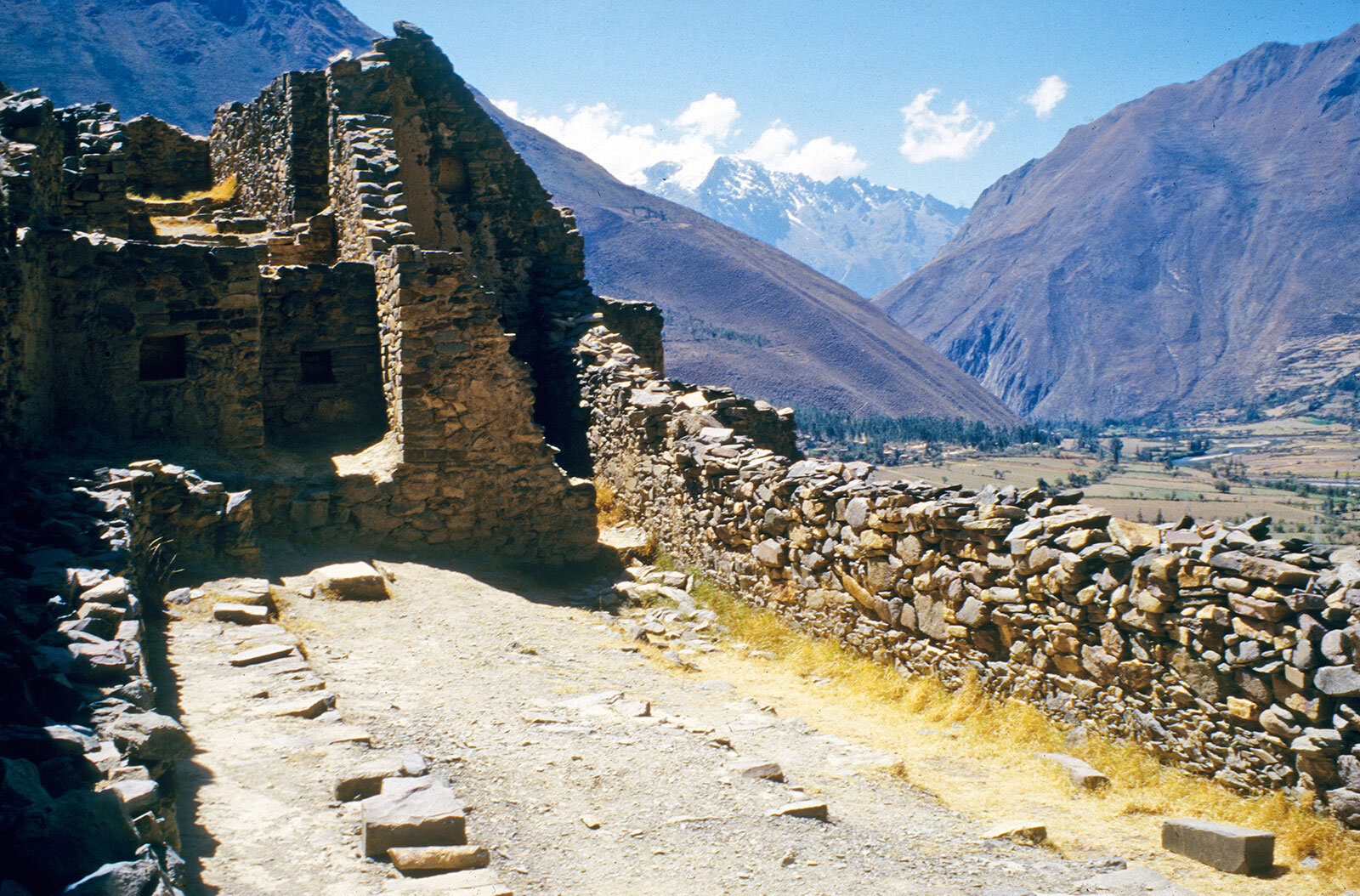
Pisac, Peru
Pisac is located in the Sacred Valley of the Inca. According to research historian Maria Rostworowksi, Pisac was the site of one of Pachacuti Incas first conquests. Here Pachacuti defeated the Cuyos, and afterward he constructed one of his many royal estates. It is said that Pachacuti enjoyed coming here for the relaxation. The ruins of Pisac are perched a spur high above the Vilcanota valley.

Tikal, Guatemala
Tikal lies deep in the Guatemalan rain forest 300 kilometers north of Guatemala City. At one time it was one of the greatest cities in the world. Today, Tikal is one of the most visited archaeological sites in Central America. It is believed that during ancient Mayan times, Tikal served as a major trade site. This was because Tikal sits on a type of Continental Divide, both the Caribbean Sea and the Pacific Ocean can be reach by river from Tikal.

Uxmal, Yucatan Peninsula
Uxmal is located about 78 kilometers south of Merida, on the Yucatan Peninsula. This ancient Mayan city is best known for its beautiful architecture. Uxmal flourished during the Classic Period. Scientists differ on the exact date of its founding. However, Carbon-14 tests by Yale University tells us that Uxmal was probably founded between 500AD and 550AD. These first occupants most likely arrived from the Chiapas area of southern Mexico.

Ollantaytambo, Peru
The ancient city of Ollantaytambo is located fifty miles northwest of Cuzco, in the Yucay Valley. Today, it is probably best know as the starting point of the Inca Trail. Ollantaytambo is rich in Incan history, and the ruins found here sit in one of the most pristine settings imaginable. The Spanish conquistadors discovered Ollantaytambo only after Sapa Inca Manco Inca rebelled and set up his new capital here.

Monte Alban, Oaxaca, Mexico
Monte Alban is located in the Mexican state of Oaxaca. Its majestic ruins are perched on a mountain top, a few kilometers outside of Oaxaca City. Monte Alban was one of Mexico's first major cities. It served as the capital of the Zapotec civilization for almost 1,300 years. Monte Alban was originally founded sometime around 500 BC. It is believed that the people who lived in the Oaxaca Valley, constructed the city on this location for defensive purposes, and that at one time it was a walled city.

Copan, Honduras
Copan is located in Western Honduras, approximately 60 miles from the Guatemalan border. Over the past two decades, the Honduran government has made this site into a beautiful national park that includes a museum. The area around the ruins is a mixture of thick jungle and tobacco plantations. The exact date that Copan was founded is still unknown. We do know that this great ceremonial center flourished during the sixth and seventh centuries.

Mitla, Oaxaca, Mexico
Mitla is located 43 kilometers southeast of Oaxaca City. At one time it served as the “Vatican City” of the Zapotec Empire. It is possible to visit both Monte Alban and the ruins of Mitla on the same day. However, if you are interested in seeing the Zapotec culture at its best then we suggest you visit the Tlacolula outdoor market on Saturday. The colors in this market are truly amazing.

Chichen Itza, Yucatan Peninsula
Chichen Itza is one of the most visited archaeological zones in the entire world. It is located on the Yucatan Peninsula approximately 70 miles east of Merida. Chichen Itza is three kilometers by one and a half kilometers in size. It is divided into three parts: the Central Group is the oldest, and the Northern Group is the newest, and the Southern Group is a mixture of old and new. Chichen Itza was founded around 400 AD.

Machu Picchu, Peru
Machu Picchu is the best known archaeological site in the western hemisphere. These white granite Incan ruins lie perched on an Andean mountain top, 2,000 feet above the Urabamba River gorge. Picchu is what the Incas called the geographic area where the ruins are found. Machu means “old” and it was used by the Incas to differentiate it from another nearby mountain called Huayna Picchu which means “young picchu.”
